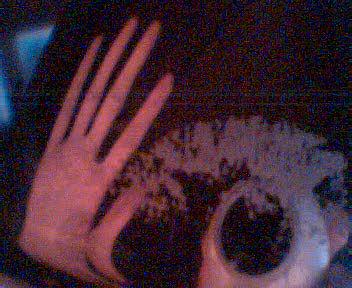Week 6
- Practical 1 - Audio Arts - Live Recording [1]
- X/Y (2xNT4)
Sounded: Trebly
- X/Y (2xKMI)
Sounded: Distant
- Omni Spaced (2xU87)
Sounded: wide dynamics, realistic sounding ambience (omni), an impressive full sound (a testament to the microphone quality)
- Cardiod Spaced (2xNT3)
Sounded: thin and trebly.
The quartet was placed roughly in the middle of the room facing the southern windows, and the mikes toward the quartet facing the northern windows.
In the studio, David stressed the point of avoiding any peaks (even if they’re only in the yellow) as a safety measure just in case of unexpected increases in amplitude.
A possible solution to this recording was to use the audio from the U87 pair with some of the NT3 pair adding some of the trebly sound to the mix.
I think this lesson was too easy compared to last weeks, and I suspect this somewhat added to a feeling of un-fulfillment.
- Practical 2 - Creative Computing - Supercollider (3) [2]
Ah good old Supercollider; Another week of programming that for some reason I’m not entirely into at the moment. I’m sure that if I really spent the extra time on it I would learn to love it, but for some reason I haven’t the motivation to do any extra other than skimming over the week's readings.
This week we learnt how to record audio from Supercollider into a file for use in other audio applications. We also looked at some of the different noise ugens that are available. The one that really caught my ear was the dust ugen. This ugen is great for trigger type processes because of its sporadically sharp wave peaks, but even as an audio source it creates some excellent sounds.
The reading contained the same things we went through in class, but also touched upon mouse control assignment (x/y movement mapping), voltage control synthesis, vibrato, and envelopes.
- Music Technology Forum - Presentation - Music Technology Forum (1) - What is Music Technology? [3]
Mark’s take on Music Technology was that it was more of a hybrid multi-disciplinary subject. He brought up the argument of vocational versus artistic education, and how unlike learning a violin, the study of Music technology isn’t as defined. He said it’s so broad that it’s more up to the individual students to find their own area of study. In relation to this, he also mentioned great opportunities for post-graduate research.
Tristan was third up in the chain of scholars, and tended to agree on points more so than form his own opinions (because by then most of the main issues had already been covered), but he did make some good comments that have unfortunately slipped my mind. His view on Music Technology was less diplomatic, yet he provided us with a more personal view on Music Technology from his own experience as a student.
- Music Technology Forum - Workshop - Edgar Varese, Milton Babbitt, Barry Truax [4]
The first of them was “Equatorial” by Edgar Varese. This piece was a vocal work with orchestral accompaniment. Here are some notes that I took about it:
- Thick, lush, and detailed texture with spotty use of orchestral colour
- Architecturally complex
- Masterful use of instrumentation
- Gave me the sense of brittle moss, crumbling away with the contact of water droplets.
The second piece we listened to was the integral serial piece, “Ensemble of Synthesisers” by Milton Babbitt. I really enjoyed this piece, particularly because of the complex electronic textures created through the various synthesisers. If the synthesisers were replaced by a say a piano, I would have probably gotten bored.
The third piece we listened to was, “Wings of Nike” by Barry Truax. I didn't write any notes for it so it was either dead boring, or it was so great I lost track of time. Whatever the case, I don’t remember it so I don’t have anything to say about it here.
- References
- [1] Grice, David. 2006. Practical on Live Recording. University of Adelaide, 4 April.
- [2] Haines, Christian. 2006. Lecture on Supercollider . University of Adelaide, 6 April.
- [3] Whittington, Stephen. Carroll, Mark. Tristan-Louth Robins 2006. Forum on the subject "What is Music Technology?". University of Adelaide, 6 April.
- [4] Harris, David. 2006. Workshop on Edgar Varese, Milton Babbitt, and Barry Truax. University of Adelaide, 6 April.


2 Comments:
Tyrell, it's Stephen Whittington (not Steven). Likewise, in your Workshop heading you refer to Barry Truax as Barry Trough!
Thanks for the feedback Martin, i'll correct this right away.
Post a Comment
<< Home